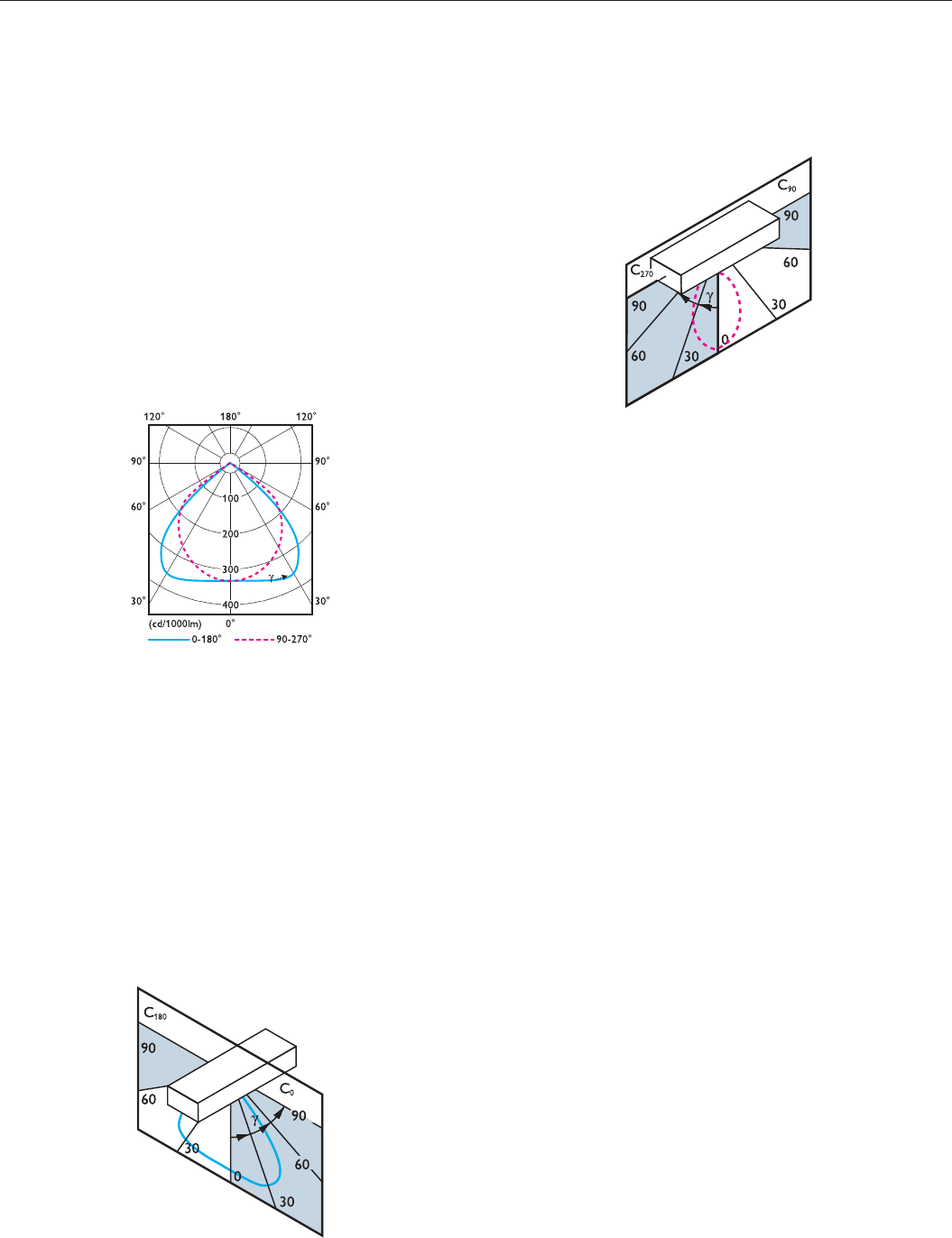
Lighting technique
Philips indoor luminairesTechnical data12.48
Technical data
The technical data in this catalogue is limited to the main diagrams
and data that indicate the beam characteristics. For functional lighting
design the polar intensity diagram is given and for accent lighting
design both the polar intensity and beam diagram are provided.
For lighting calculations all necessary data is given in the photometric
database, which is accessible via www.lightingsoftware.philips.com,
andusedinconjunctionwithcalculationprogramslikeDIALUXand
RELUX.
Several types of photometric templates are available, which contain all
relevantphotometricdata,diagrams,keyguresandtables,depending
on the type of luminaire and its application.
Polar intensity diagram
The polar intensity diagram provides a rough idea of the shape of the
light distribution of a luminaire. In the polar intensity diagram, the
luminous intensity is presented in the form of curves and given in
candelaper1000lumen(cd/1000lm)ofthenominallampuxofthe
lamp(s) applied.
For accent lighting the polar intensity diagram curves may be
expressed in candelas for the lamp type indicated.
Thediagramshowsthelightdistributionintwoplanes:
Thecontinuous(blue)line:
In the vertical plane through the width axis of the luminaire,
theC0-C180planeisindicatedas:
•
Thedotted(red)line:
In the vertical plane through the length axis of the luminaire, the
C90-C270planeisindicatedas:
•
In cases where the light distribution of a luminaire is rotation-
symmetrical, as for downlights, projectors and industrial high-bay
luminaires,itisexpressedinoneC-planeonly(solid,blueline).
Notice that for asymmetrical light distributions two planes are
insufcientforcalculationpurposes.Despitethis,inthepolarintensity
diagram, only two planes will be given, as this is internationally
accepted.
Light Output Ratio (LOR)
The light output ratio is the measure of a luminaire that indicates the
totallightingefciencyofitsopticalparts.Thevalueismeasuredand
composed of the upward and downward light contribution in relation
to the total amount of light emitted by the lamp(s) of a luminaire
under standard operating conditions.
Luminaire luminance (L)
The luminance of the luminous parts, optics and cover of the
luminaire is measured and or calculated at intervals of 15 degrees
and at elevation angles of 65, 75 and 85 degrees to obtain the average
luminaire luminance. The average luminaire luminance shall not exceed
thelimitsspeciedinEN12464-1fortheparticulartasksandactivities
in question for the maximum lamp and luminaire output.
Unied Glare Rating Reference (UGR
R
)
TheUGRreferenceratingofaluminaireistheUniedGlareRating
valueobtainedfromtheUGRtableatroomreectionfactors0.70,
0.50and0.20andforroomdimensions4Hx8H,crosswiseand
endwise. The highest of both values should be lower than or equal to
the value of the particular UGR class, i.e. 16, 19, 22, 25 or 28, which
denestheoverallUGRreferenceratingofaluminaire.
Indoor_2008_Chapter_12_LIS.indb 48 20-05-2008 14:35:38


















